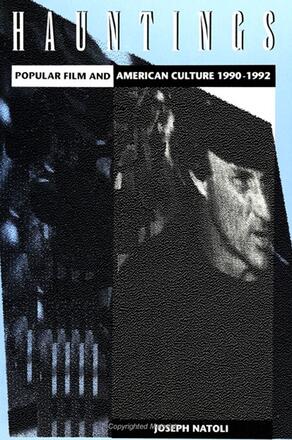
Hauntings
Popular Film and American Culture 1990-1992
Alternative formats available from:
This book is about the way that popular film brings to a "sayable" level that which haunts us in the media headlines.
Description
We are haunted by what we cannot fully identify, by what we cannot make identical to what we already are, have, and know. AIDS is visible, as is the South Central Los Angeles riot/revolt, the dead eyes of Amy Fisher, the pubic hair in Clarence Thomas' Coke, the Branch Davidian Compound shimmering in the distance, and much more. The intensity of all this does not escape the general public. Popular film plugs into this haunting power because it attracts a mass audience. This book is about what haunts the headlines as well as the Big Screen in America during 1990-1992.
Joseph Natoli teaches postmodernism at the Center for Integrative Studies/Arts and Humanities at Michigan State University. He is the editor of Tracing Literary Theory, Literary Theory's Future(s), Psychological Perspectives on Literature: Dissident Freudian and Non-Freudian, and co-editor of A Postmodern Reader (with Linda Hutcheon), published by SUNY Press; author of Mots D'Ordre: Disorder in Literary Worlds, also published by SUNY Press, and Twentieth Century Blake Criticism: Northrop Frye to the Present; and co-author of Psychocriticism.
Reviews
"This book is so very topical—in the best of all possible senses. It uses contemporary films to comment upon broader social issues: violence, homophobia, sexual abuse, television, capitalism, class, marriage, ecology, democracy, greed, subcultures, and the list could go on. The fears of America—the hauntings by the Rodney King decision, presidential elections, wilding, Bensonhurst—inform and form the insights into the films as well. The mutual interplay is productive and exciting.
"The thesis that popular culture, though constrained by the Market and its values, plugs into what 'haunts' contemporary culture at large, is original, important, disturbing. This is a theoretically sophisticated work that wears its theory with grace. The bringing together of the personal 'hauntings' with the films and headlines is particularly effective. " — Linda Hutcheon, University of Toronto
"The author tackles new territory in a strikingly new fashion; it is engagingly postmodern and reader-friendly. This book begins a project of cultural redemption, in that it is valuable to the scholar and the casual reader alike, and not an elitist text in any sense. " — Wheeler Winston Dixon, University of Nebraska